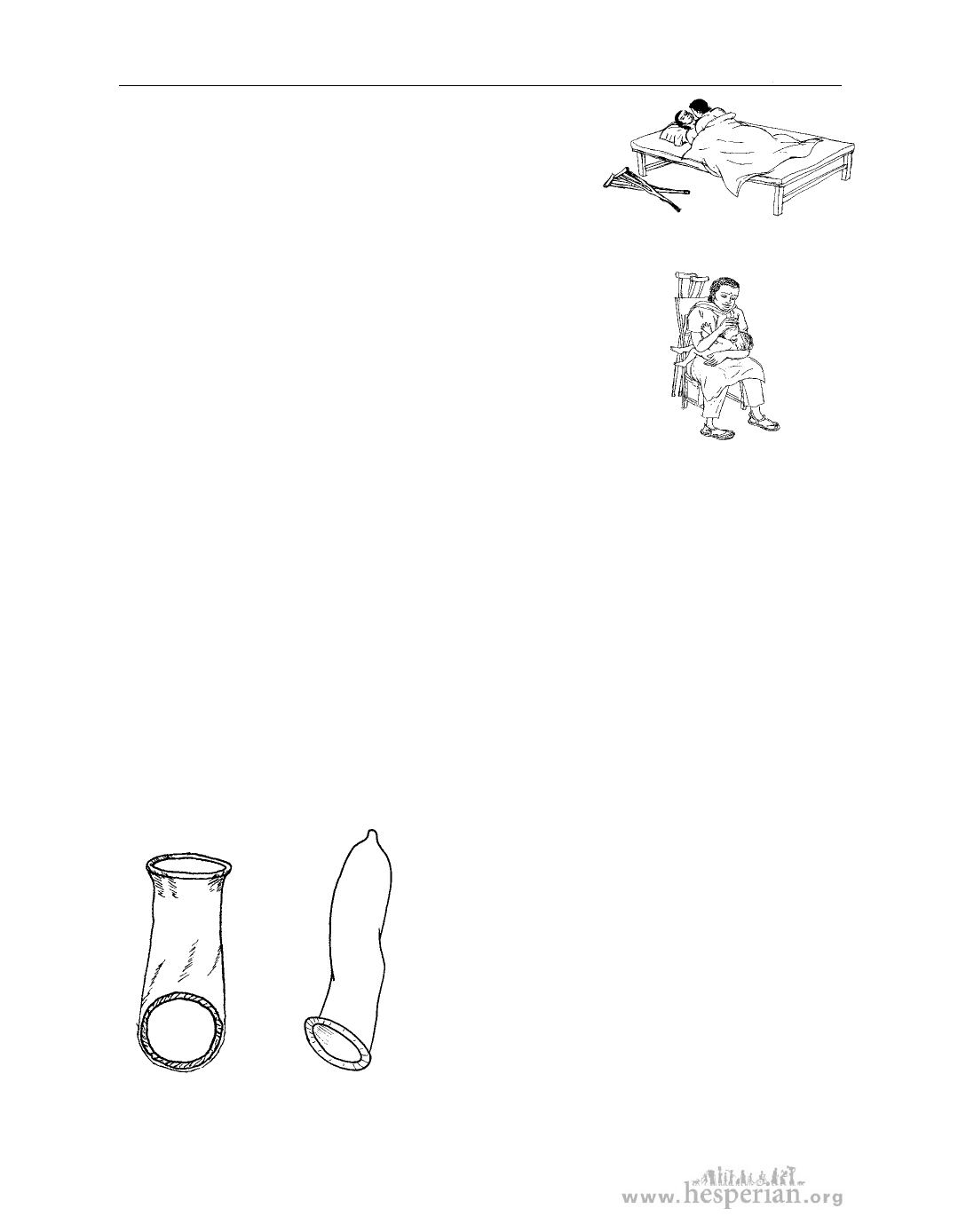
80 chapter 4: Understanding your body
Becoming pregnant
About 14 days after the beginning of each monthly
bleeding, when the lining in the womb is ready, an
egg is released from one of the ovaries. This is called
ovulation. The egg then travels down a tube into the
womb. At this time a woman is fertile and can become
pregnant. If she has recently had sex with a man, his
sperm may enter the womb through the cervix and
join with her egg. This is called fertilization and is the
beginning of pregnancy. If the egg does not join with a
man’s sperm, there is no pregnancy, and the lining of
the womb is shed during the monthly bleeding.
9 months later...
WHAT EVERY WOMAN SHOULD KNOW ABOUT HAVING SEX
• You can get pregnant the first time you have sex with a man.
• You can get pregnant any time you have sex without using a family planning
method (even if you have sex only once).
• You can get pregnant even if the man thinks he did not let his sperm (seed)
come out.
• You can get a sexually transmitted infection (STI) or HIV if you do not use
a condom when you have sex with an infected person. (You cannot tell by
looking at a person if he is infected or not—see page 172.)
• It is easier for a girl or a woman to get an STI or HIV from man during sex than
it is for her to give these diseases to him. This is because the man’s semen stays
in her vagina for a long time.
• It is harder to know if a girl or woman has an STI because the signs of infection
are often inside her body.
Always use either a male condom or a
female condom for protection against STIs
and HIV/ AIDS. Even though sperm, and
the germs that cause infection, are very
small, they cannot get through the plastic
or latex of a condom if it is put on properly
(see pages 190 and 191).
condom for women
(female condom)
condom for men
For more information about protecting
yourself from infection, see Chapter 8. To
prevent unwanted pregnancy, see Chapter 9.
A Health Handbook for Women with Disabilities 2007